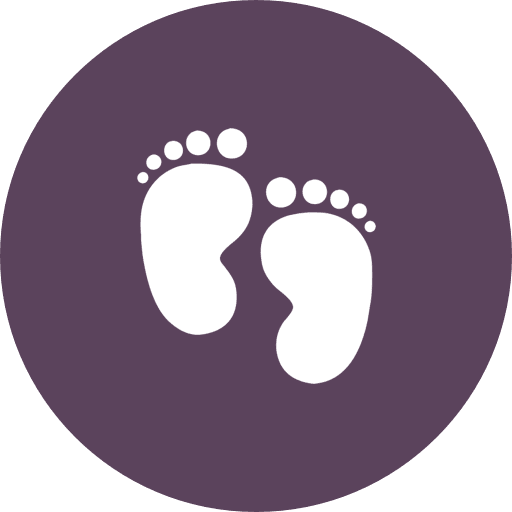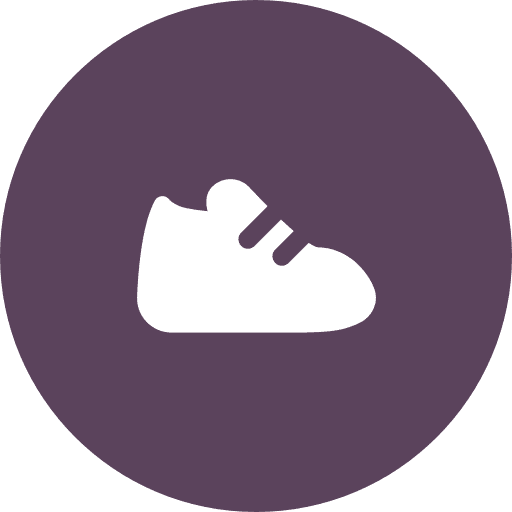
Welcome to Kids Feet Clinic!
-

Children’s Foot Health care by Registered Chiropodists, with advanced knowledge in the area of podo-paediatrics (children’s foot problems).
More Info -

Prescription Custom Orthotics, precision engineered and tailored specially to the growing bones, joints, and muscles of your children’s feet.
More Info -

Assessment and Guidelines on Children’s Footwear to ensure that you’re selecting the best footwear for your child’s foot type.
More Info
Children's Orthotics

Outgrowth Program
We know how quickly children under the age of 16 outgrow everything, so we have an outgrowth program for children’s orthotics. Your child will be monitored carefully with regular follow up appointments to check the childs development and to check the orthotics are functioning optimally.
Children’s Shoes
Children’s Medical Foot Concerns
-
Newborn and Infant Medical Foot Concerns
-
Club feet - (Talipes Equino Varus)
This deformity is when the lower leg, ankle and foot are twisted internally out of normal position. The cause is unknown, and may be related to increased pressure in the uterus.
-
Congenital Dislocation of the hip (CDH)
This condition is described as an unstable, subluxed or dislocated hip joint. On examination a clicking sound occurs when rotating the hips. As the child starts to walk an unstable gait is seen. CDH can be caused by: hip joint irregularities, ligamentus laxity, a breech delivery, a Malposition inutero, heavy winter clothing or the carrying position of the newborn.
-
Congenital Vertical Talus
This is a rare disarticulation of the navicular talus joint at birth. It is associated with an abnormal neurological and skeletal system. Symptoms often seen are flat feet, ankle equinus, tight Achilles tendon and a vertical talus.
-
Accessory (Extra) Bones
These are extra bones present at birth. They are a result of a non-union fracture. They can be caused by trauma or unknown growth abnormality. These bones are commonly located in the foot adjacent to the talus, navicular, sustentaculi, cuboid and first metatarsal bones.
-
Congential Toe Deformities
These are toe deformities present at birth due to an abnormality in development. Examples of these deformities include: Varus digit, DQMV, Polydactyly, Ectrodactyly, Syndactyly, and Macrodactyly
Varus Digit is a plantar medially rotated (curled toe). The cause is unknown, perhaps hypoplasia of intrinsic muscles.
Digitus Quintus Minimi Varus (DQMV) is a familiar condition caused from a hyper extended small toe overriding the toe beside it.
Polydactyly is when extra digits are present, The cause is an inherited autosomal dominant trait, or mutant genes.
Ectrodactyly is the absence or 2nd and 3rd metatarsals and digits. The cause is an inherited autosomal dominant trait. The foot presents as a lobster claw foot or split foot.
Syndactyly is when two or more toes fuse together, toes appear webbed. The cause is heredity, or a developmental defect at week 4-5 of pregnancy.
Macrodactyly is a grossly enlarged digit. The cause is unknown, possibly from peripheral nerve enlargement.
-
Metatarsus Adductus
This is a curvature of the forefoot toward the midline of the body. The foot appears in a ‘C’ shape, The condition occurs in 1 in 1000 births. The cause could be due to In utero position, a short medial cuneiform bone, a tight Adductus Hallucis muscle or abnormal muscle insertion.
-
Infant Nail problems
Ingrown Nails are common in infants. The most common cause is a flexible nail plate that irritates surronding skin
Subungal exostosis is a condition that presents as a small outgrowth of bone underneath the nail at the distal portion of the nail. The nail is pushed away from the nail bed and the nail thickens. This condition is usually caused from trauma to the digit and is most commonly seen in the big toe.
-
-
Toddler and Child Medical Foot conditions
-
In Toe, Out Toe, Toe Walker
Alterations in gait, can include the feet turning in or out during walking. Signs and Symptoms if In-toeing include a pigeon toe type walking, with the toes pointing inwards. Frequent tripping, or a waddling gait are commonly seen. The cause can be a rotation of the foot or leg, In uterus position, tight hamstring muscles, sleeping and lying positions. Flat feet can form if left untreated.
-
Toe Deformities
(a) Mallet, (b) Claw, (c) Hammer
These may be familiar in nature. The most common cause is an imbalance of flexor and extensor or intrinsic muscles. -
Knee Rotation Bow Legs (Genu Varum)
This condition presents as a medial curvature of the tibia and femur possibly due to a disturbance of the growth plate, soft tissue muscle problems, early walking with unstable knees. Flat feet and frequent falling and tripping while walking are common with this condition.
-
Eczema
This condition is common with children. It is an inflammation of the skin to an irritant, internal or external. The cause is often unknown, it is difficult to diagnose. In the acute phase it presents with vesicles and blisters, redness and itching are common signs. More chronic conditions present as dry skin with scaling and fissures.
-
Torsional Rotation of the Tibia and Femur
Femoral Torsion is a twist in the femur (upper thigh) bone shaft. This can be caused by tight ligaments or muscles, or sleeping or sitting positions.
Tibial Torsion is a twist with in the tibia (lower leg) bone. The cause may be related to stomach sleeping with feet tucked in, or sitting in a W position with the feet tucked in.
-
Flat Feet
Pes planus (Flat Feet) Can be described as when there is no arch present. There are many possible causes for flat feet. The common symptoms seen are pain, foot fatigue, night cramps, abnormal shoe wear and a pronated gait.
-
-
Pre-Teen/ Adolescent Medical Foot Concerns
-
High Arch feet (Pes Cavus)
This is when the arch of the foot is higher than normal. The cause can be from tight musculature of the arch, a muscle imbalance in the foot or an inclined heel bone. The high arch can also be caused by a rotation of the ankle and foot outwards (supination). The problems that occur from the high arched foot are poor shock absorption and increased stress on the foot.
-
Knocked Knees (Genu Valgum)
Genu valgum (Knocked knees)
This condition presents as a lateral curvature of the tibia and femur possibly due to a disturbance of the growth plate, soft tissue muscle problems, early walking with unstable knees. Flat feet and frequent falling and tripping while walking are common with this condition. -
Ankle Equinus
Equinus of the ankle is a limited range of motion at the ankle, with dorsiflexion movement less than 10 degrees. It can be muscular, or osseous in nature. The cause can be tight muscles, irregular bony structure of the ankle or a soft tissue compensation for rearfoot /forefoot varus.
-
Osteochondritis Kohlers/ Freibergs Infraction
This is an aseptic necrosis of a bone followed by re-growth in a more flattened shape. In Kohler’s Disease this occurs between the navicular and tarsal bones. The cause is unknown and may be related to trauma of the area. The signs and symptoms are a painful limp, warm possibly swollen area over affected bones. This condition usually occurs unilaterally.
Freiberg’s Infraction an aseptic necrosis of a metatarsal bone followed by re-growth in a more flattened shape. Most commonly this condition occurs in the second metatarsal head. The cause is unknown, possibly due to trauma. Symptoms include a painful limp, warm possibly swollen area over affected bones. On X-ray a decreased joint space, flat navicular, flat metatarsal head are noted. On examination a bony lump is present and on palpation the area is tender to touch.
-
Metatarsalgia
This is a general term that refers to pain in the ball of the foot. It could be related to stress fractures, bone misalignment, digital neuritis, sesamoiditis or just increased pressure to the area. It is important to determine the exact condition and origin of its cause to treat this condition properly.
-
Heel Pain- Plantar Fasciits
Plantar Fasciitis (heel pain) is the most common injury that occurs at the heel. It is caused by an over strain of the plantar fascia band, a ligament like structure that supports the arch of the foot. The symptoms of this condition are pain on the bottom of the heel. Commonly the heel is more painful in the morning and gradually wears off as the body starts moving.
-
Achilles Tendonitis
Over use or sudden movement of the Achilles tendon can result in an inflammation of the tendon called tendonitis. This inflammation can result in degeneration or even a rupture in severe cases. The strength and position as well as the alignment of the ankle, leg and knees play a major role in this injury. Excessive pronation of the foot, and high arches are predisposing conditions for this injury. The symptoms of this condition are a burning/pricking pain at the back of the heel and pain as the heel lifts off the ground.
-
Severs Disease
This disease is caused from a traction injury from chronic strain at post calcaneal apophysis during a growth period. The Achilles Tendon is commonly strained with this condition. Pain is felt on the plantar aspect of the heel and sometimes at the Achilles tendon insertion to the heel bone.
-
Juvenile Arthritis
This is a general term referring to a group of joint diseases that are at lease three months in duration before the age of 16 with no associated medical conditions. The cause is unknown, there may be a genetic predisposition. The condition usually occurs between the ages of 2-5 and 10-15 years old. Signs and symptoms can include a fever, rash, anaemia, weight loss, swollen stiff joints and a decrease range of motion. Foot deformities associated with this condition include rearfoot valgus, forefoot varus/valgus, bunions and toe deformities.
-
Ingrown Toe Nails
An ingrown toe nail occurs when a piece of the nail becomes embedded into the skin around it. The skin around becomes inflamed and can become infected. The toe is usually sore when walking and wearing shoes.
-
Fungal Infections
Athletes foot is a fungal infection (Tinea Pedis) of the skin, it is most commonly seen between the toes. Fungus grows in dark, warm, moist areas of the skin; inside the shoes is an ideal setting. Symptoms that usually occur are pain, itching, redness, cracking blisters and scaling of the skin.
-
Osgood Schlatters Disease
Osgood Schlatters is an over use injury caused by strain of the patellar tendon on the tibial tubercle just below the knee on the lower leg. This condition is common in boys 10-14 years old. The tibial tubercle on dorsal upper third portion of the tibia bone becomes enlarged and painful with activity. There may be muscle imbalances causing the overstrain.
-
Pitting Keratolysis
This condition is an infection of the skin on the bottom of the foot due to a breakdown of the keratin layer of the skin. The skin appears a light brown clour, moist with pits or craters present. This condition can be associated with a bacterial infection, which causes an odour to occur. There is often a burning painful sensation of the skin surface.
-
